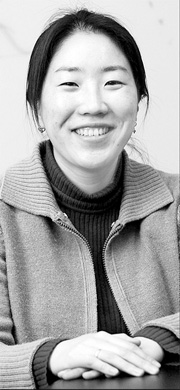Pushing back the boundaries of the cosmos with a balloon

Park Na-hee Photo by Kang Jung-hyun
“To understand what kinds of particles are present in space is of fundamental importance to the aerospace industry,” said Park. “I am glad and also a little bit surprised that my work has been acknowledged.” Park, 29, wrote a thesis based on two experiments she conducted at the South Pole in 2004 and 2005, analyzing the particles found in cosmic rays. The other recipient was Xavier Llopart from the CERN research institute in Geneva. Park competed with over 250 astrophysicists from around the world for the award.
The experiment that she conducted was part of a NASA program, which began in 2004. It uses a huge ballon called CREAM ― Cosmic Rays, Energetics and Mass. She was the only Korean dispatched to the project at the South Pole, where she went twice for a total of 80 days to work with scientists from Italy and the United States. Park was responsible for remotely controlling a silicon cosmic ray particle detector, which was developed by her professor, Yang Jong-mann, at Ewha Womans University. The detector was loaded into the balloon. Park’s thesis is based on results she obtained from the data collected by the detector.
Park also gave a plenary talk in Vienna, in front of over 100 astrophysicists. “I was proud of making my 25-minute presentation before these famous scientists,” she said.
Park said she is a late bloomer in terms of her studies. Growing up in Busan, she was interested in constellations and she attended many star-gazing sessions at astronomical observatories.
“I did not like the fact that many of the best students apply for medical schools,” she said. “I wanted to study something real and chose to study physics.”
She was attracted to astrophysics when she was a senior. She had a hard time deciding whether to get a master’s degree or a job and then she was introduced to the science of detecting cosmic ray particles. Since then, she has spent 14 hours a day doing research. She said 14 hours is not enough to achieve her goals and she intends to spend more time on her work.
Park said she has a dream to work at NASA. “Korea and Japan are not very active in astrophysics research, compared to the United States and Europe. Someday I want to be able to work in Korea to discover the secret of the universe,” she said.
Yang has been teaching Park for more than six years and said: “I am proud of her. She explored her own field of research without much help.”
By Park Su-ryon JoongAng Ilbo [jbiz91@joongang.co.kr]










with the Korea JoongAng Daily
To write comments, please log in to one of the accounts.
Standards Board Policy (0/250자)